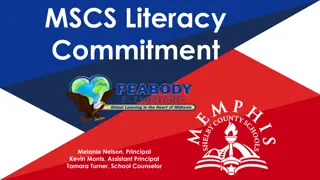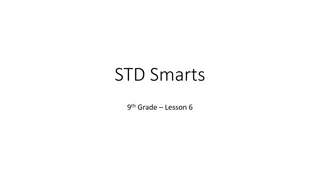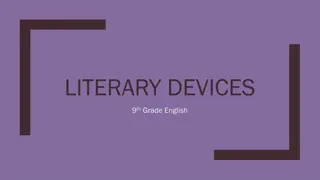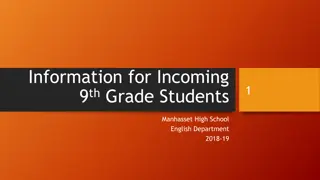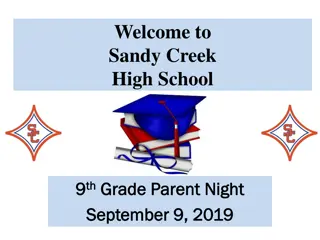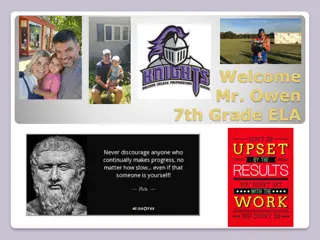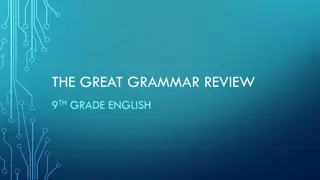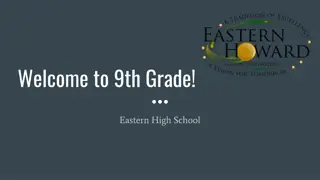
9th Grade Pre-IB English Summer Reading Assignment
Join Largo High School's incoming 9th-grade students in their Pre-IB English journey by delving into the book "How to Read Literature like a Professor." The assignment involves color-marking, annotating, and exploring literary archetypes to enhance understanding and analysis skills. Get ready for a enriching literary experience guided by Mr. Taylor and Mrs. Crum!
Download Presentation

Please find below an Image/Link to download the presentation.
The content on the website is provided AS IS for your information and personal use only. It may not be sold, licensed, or shared on other websites without obtaining consent from the author. If you encounter any issues during the download, it is possible that the publisher has removed the file from their server.
You are allowed to download the files provided on this website for personal or commercial use, subject to the condition that they are used lawfully. All files are the property of their respective owners.
The content on the website is provided AS IS for your information and personal use only. It may not be sold, licensed, or shared on other websites without obtaining consent from the author.
E N D
Presentation Transcript
Largo High School School Year 2025-2026 Pre-IB 9thGrade English Summer Reading Assignment
Welcome Incoming Freshmen! Welcome from Mr. Taylor and Mrs. Crum, your IB English teachers for 9th grade This Powerpoint presentation along with the instructional document provided to you at summer camp are available on Managebac and on the school website. https://www.pcsb.org/Page/6110 Read the following book over the summer while completing the accompanying reading tasks.
Read the INTRODUCTION and ALL CHAPTERS EXCEPT THE INTERLUDE and THE TEST CASE! The Text How to Read Literature like a Professor by Thomas C. Foster Publisher: Harper Perennial; Revised edition (February 25, 2014) ISBN-10:9780062301673 ISBN-13: 978-0062301673 Book information is taken from Amazon.com and is from my book purchase years ago. So, it is entirely acceptable and expected for you to purchase a different edition of the text. As an integral part of practicing English studies the IB way, you will be highlighting with highlighters and annotating by handwriting in the marginal space on the pages of this text, so paperbacks are required. Trust your interpretation of these instructions and that your reading work will be accepted well and with an open mind. This is an older edition. Any edition paperback will do.
Literary Analysis Archetypes
Archetype Defined What this book represents is not a database of all the cultural codes by which writers create and readers understand the products of that creation, but a template, a pattern, a grammar of sorts from which you can learn to look for those codes on your own (Foster 304). Archetype: the original pattern or model of which all things of the same type are representations or copies (Merriam- Webster s Online Dictionary) The chapter titles in Foster s book equate essentially to archetypes, or prototypes, of concepts, symbols that are ancient, timeless, universal. (Your IB English teachers)
Color-Marking In your book, interact with the text by color-marking/highlighting words and phrases that relate to the categories listed below. Color-mark/highlight EACH OF THE 3 CATEGORIES with equal application throughout the chapters, with a minimum of at least 2 DIFFERENT CATEGORIES/COLORS PER PAGE. SLIDE 3 Color-Marking In your book, interact with the text by color-marking/highlighting words and phrases that relate to the categories listed below. Color- mark/highlight each of the 3 categories during reading, at least 2 different categories/colors per page to show real analysis and completion. Category 1 Archetypes/Chapter Titles -archetypes (chapter titles), definitions of new words, new concepts, ideas, or ways of thinking that RELATE TO THE ARCHETYPES/Chapter Titles. Assign your OWN COLORS to categories: Category 1- labels, topics, definitions, theories (new concepts/ideas) Category 2- specific examples, applications (literature, culture, history) Category 3-narrator s voice (author Foster s opinions, insights or personal experiences) Category 2 Applications/Examples- applications or specific examples in literature, culture, history, etc Think SPECIFIC names, titles, and places, and famous sayings. Movie or book titles, character s names, cities, countries, other names with capital letters, sayings in quotation marks or titles in italics, specific scenes in books, movies, poems, or myths apply. Category 3 Foster -narrator s voice (author Foster s opinions, thoughts, insights, experiences, etc.) Think Foster s attitude toward various subjects/his tone or attitude, Foster s stated personal opinions, thoughts, comments, biases, memories, pieces of wisdom, experiences, etc.
The Categories Again Category 1 Archetypes-new language, ideas, concepts Category 2 Application- specific names and examples Category 3 Foster- Foster s opinions, thoughts, experiences
"OK, so not everyone is a Christian around these parts, nor do those who would say they are necessarily have more than a nodding familiarity with the New Testament, aside from John 3:16, which is always beside the goalposts at football games. But in all probability they do know one thing: they know why it's called Christianity. OK, so it's not the most profound insight ever, but it matters. A lot. Northrop Frye, one of the great literary critics, said in the 1950s that biblical typology the comparative study of types between the Old and New Testaments and, by extension, out into literature was a dead language, and things haven't improved since then. While we may not be all that well versed in types and archetypes from the Bible, we generally recognize, whatever our religious affiliation, some of the features that make Christ who he is" (Foster 125). Sample Analysis of Foster s Text Using Color-Marking Techniques Archetypes Application Foster Remember that you only must do 2 DIFFERENT CATEGORIES/COLORS PER PAGE. This sample shows 3!
Annotation Continue to interact with the text as you read Foster s book by annotating or making notes in the margins about the words and phrases you color-marked. SLIDE 3 Color-Marking In your book, interact with the text by color-marking/highlighting words and phrases that relate to the categories listed below. Color- mark/highlight each of the 3 categories during reading, at least 2 different categories/colors per page to show real analysis and completion. Annotate with a minimum of at least 1 annotation in the margin of each PAGE. Annotations should correlate to those words and phrases you color- marked/highlighted on each page. Use your annotation to explain in your own words the archetype, symbol, or literary concept highlighted. Each of your annotation notes should be at least 5 or more words in length Category 1- labels, topics, definitions, theories (new concepts/ideas) Category 2- specific examples, applications (literature, culture, history) Category 3-narrator s voice (author Foster s opinions, insights or personal experiences)
"OK, so not everyone is a Christian around these parts, nor do those who would say they are necessarily have more than a nodding familiarity with the New Testament, aside from John 3:16, which is always beside the goalposts at football games. But in all probability they do know one thing: they know why it's called Christianity. OK, so it's not the most profound insight ever, but it matters. A lot. Northrop Frye, one of the great literary critics, said in the 1950s that biblical typology the comparative study of types between the Old and New Testaments and, by extension, out into literature was a dead language, and things haven't improved since then. While we may not be all that well versed in types and archetypes from the Bible, we generally recognize, whatever our religious affiliation, some of the features that make Christ who he is" (Foster 125). Famous scripture verse showing the Famous scripture verse showing the character of Jesus Christ character of Jesus Christ Foster s attitude is playful, mocking the clich of ster s attitude is playful, mocking the clich of Bible scripture on football fields Bible scripture on football fields. . Foster s tone is sarcastic and suggesting that most Foster s tone is sarcastic and suggesting that most people have minimal knowledge of the Bible. people have minimal knowledge of the Bible. Sample Analysis of Foster s Text Adding Annotation Techniques Divisions of the Divisions of the Christian Bible Christian Bible Christ Figure is an archetype/chapter Christ Figure is an archetype/chapter title of Foster s book. title of Foster s book. Archetypes Applications Foster Remember that you only must do 1 DIFFERENT CATEGORIES/COLORS PER PAGE. This sample shows 3!
More You Should Do Bring your book color-marked and annotated on the first day of class. This is a graded assignment! There will be additional graded assignments related to How to Read Literature like a Professor during the first few weeks of the school year. Be prepared for a READING Quiz consisting of 20 questions over the main ideas of Foster s book. Book and film titles referenced by Foster are NOT important for this quiz. Focus your studying on CHAPTER TITLES, general ideas, key terms, archetypes, symbolism, comparisons, and other literary concepts. You will find these archetypes extremely applicable in making the connections that IB requires through your analysis and interpretation of both literary and non-literary texts. Thanks for your attention and happy summer reading!



